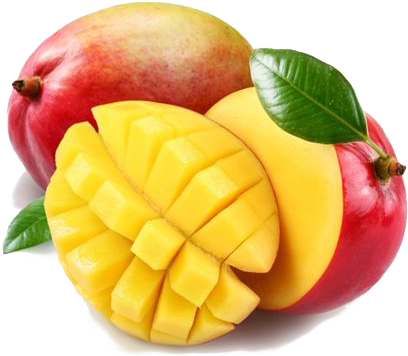MANGO
Vitamin & minerals: A, B, C, Phosphorus, pectin, antioxidants, Beta Carotene.
How to consume: More delicious when consumed chilled. You can have it as fresh fruit
or add It your salads, desserts, icecreams and cocktails. It gives an amazing touch to
meat dishes both visually and tastewise.
Mango is generally sweet, although the taste and texture of the flesh
varies across cultivars, some having a soft, pulpy texture similar to
an over-ripe plum, while others flesh is firmer, like a cantaloupe or avocado.
Some cultivars' flesh has a fibrous texture. Mango is consumed both as ripe fruit
and as an unripe fruit (vegetable) In unripe, pickled or cooked forms, the mango
skin is consumed comfortably, whereas in ripe fruits, the skin is thicker and bitter
and is usually not eaten. The ripe mango is commonly eaten fresh. Mongoes have been
cultivated in the Indian subcontinent for thousands of years [2] and reached East
Asia between the 5th-4th century BC. By the 10th cenrury AD, cultivation had begun
in East Africa, coming later to Brazil, West Indies and Mexico, where an appropriate
climate allows its growth. The 14th century Moroccan traveler, Ibn Battuta, reported
it at Mogodishu
Mango is now cultivated in most frost-free tropical and warmer subtropical climates;
nearly half of the worlds mangoes are cultivated in India alone. (Wikipedia)


